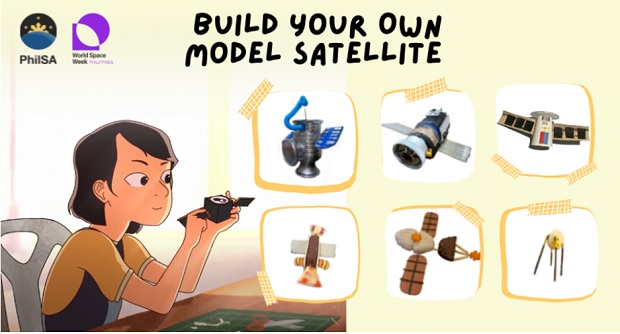Fourteen kids aged 9 to 10 years old heeded this year’s call to join the mission to develop their own model satellites made of recyclable or edible materials. All entries to the 2022 Build Your Own Model Satellite competition astonished scientists from the Philippine Space Agency (PhilSA) who evaluated the submissions.

Prior to making their satellites, the contestants signed up and attended a virtual lecture by Dr. Paul Leonard Atchong C. Hilario, SSTA researcher of PhilSA Spacecraft Payload and Communications System Development Division, and Shielo N. Muta, chief science research specialist of PhilSA Space Missions Control and Operation Division.
The session held on October 6 took up topics on satellite development, missions, payloads, applications, and sustainability, in line with the theme of World Space Week 2022, “Space and Sustainability.”
In his opening remarks, PhilSA Space Technology and Mission Systems Bureau director Marc Caesar R. Talampas encouraged the participants’ curiosity in space science and technology.
He also gave insight on orbital debris concerns as a way to introduce the concept of sustainability to the kids: “As the future designers of Philippine satellites, you can help ensure the prevention of space debris through propulsion systems or deorbit mechanisms.”
Based on the lecture, the participants had to create model satellites consisting of a container (body), power source, scientific instruments or payloads, communication devices or antennas, and the orientation finder.
Contestants must only use recyclable or edible materials. Each participant was also required to submit a short video explaining the mission of their satellite and how this would contribute to sustainable living on Earth.
Among the missions conceptualized by participants are: a debris-collecting satellite, a satellite that will alert humanity to plant trees every time the number falls below the acceptable threshold, a satellite that will monitor the health of the ozone layer, and a satellite that will observe the North and South poles to check the status of icebergs.
The entities were evaluated by Muta, Hilario, and Daniel Fadi Rahayel, supervising science research specialist of PhilSA Spacecraft Electrical and Computing Systems Development Division, who were all impressed by the level of environmental awareness of the contestants at a young age.




